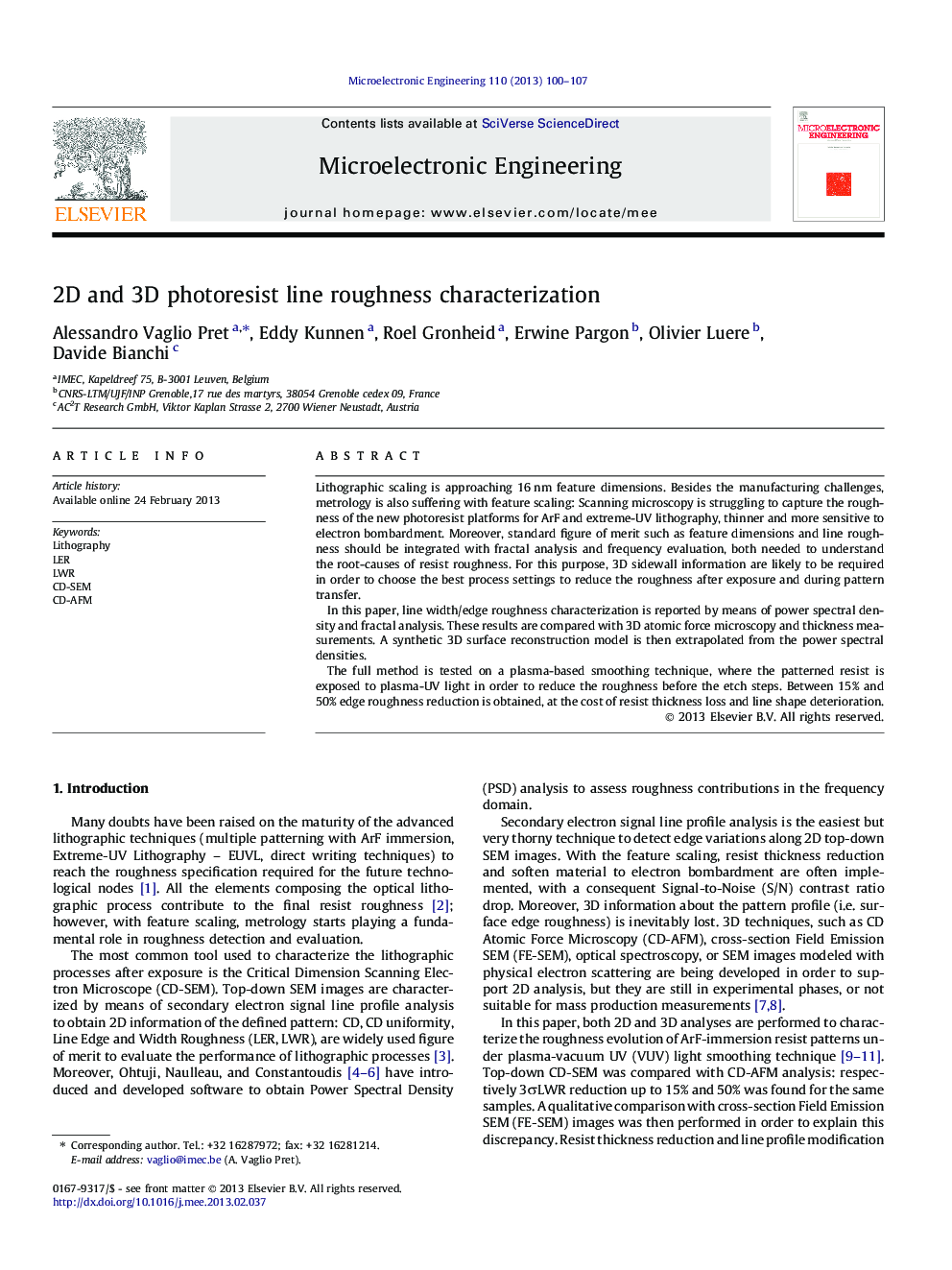| کد مقاله | کد نشریه | سال انتشار | مقاله انگلیسی | نسخه تمام متن |
|---|---|---|---|---|
| 544242 | 1450371 | 2013 | 8 صفحه PDF | دانلود رایگان |

Lithographic scaling is approaching 16 nm feature dimensions. Besides the manufacturing challenges, metrology is also suffering with feature scaling: Scanning microscopy is struggling to capture the roughness of the new photoresist platforms for ArF and extreme-UV lithography, thinner and more sensitive to electron bombardment. Moreover, standard figure of merit such as feature dimensions and line roughness should be integrated with fractal analysis and frequency evaluation, both needed to understand the root-causes of resist roughness. For this purpose, 3D sidewall information are likely to be required in order to choose the best process settings to reduce the roughness after exposure and during pattern transfer.In this paper, line width/edge roughness characterization is reported by means of power spectral density and fractal analysis. These results are compared with 3D atomic force microscopy and thickness measurements. A synthetic 3D surface reconstruction model is then extrapolated from the power spectral densities.The full method is tested on a plasma-based smoothing technique, where the patterned resist is exposed to plasma-UV light in order to reduce the roughness before the etch steps. Between 15% and 50% edge roughness reduction is obtained, at the cost of resist thickness loss and line shape deterioration.
Figure optionsDownload as PowerPoint slideHighlights
► Resist feature’s roughness after is becoming quite difficult to detect and analyze.
► We compare different metrologies (2D, 3D) to characterize LER, LWR.
► PSD analysis is also used to characterize the roughness in the frequency domain.
► Different techniques lead to absolute and relative roughness values/trends.
► The same smoothing characterized by different tools leads to different conclusions.
Journal: Microelectronic Engineering - Volume 110, October 2013, Pages 100–107